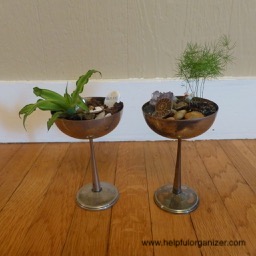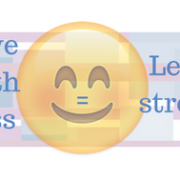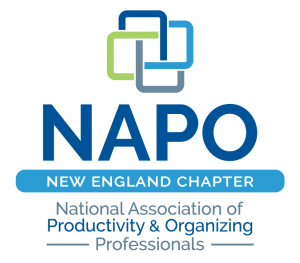 During the past 10 years I’ve been in business, I’ve worked with over 1450* individuals to help them organize, downsize, and de-clutter. Although every project is different, with its own unique goals, the outcome is always achieved by getting rid of some stuff. The process of organizing includes removing what we no longer need, use, or want.
During the past 10 years I’ve been in business, I’ve worked with over 1450* individuals to help them organize, downsize, and de-clutter. Although every project is different, with its own unique goals, the outcome is always achieved by getting rid of some stuff. The process of organizing includes removing what we no longer need, use, or want. By removing stuff we free ourselves from the burden of having more than we can successfully maintain. By reducing the amount of material possessions we own, we have less to organize, clean, and stress about. Having less allows us to spend more time on what is important to us. Spending more time on what we enjoy improves the quality of our lives. The conclusion is we find the joy of less.
By removing stuff we free ourselves from the burden of having more than we can successfully maintain. By reducing the amount of material possessions we own, we have less to organize, clean, and stress about. Having less allows us to spend more time on what is important to us. Spending more time on what we enjoy improves the quality of our lives. The conclusion is we find the joy of less.
Through the years, I’ve witnessed how my clients’ lives improve with less stuff, and I’ve also seen first-hand how having less stuff has improved my life. My husband and I have participated in the Minimalist Game twice, May 2016 and June 2017. Each time we were successful in completing the game and getting rid of 930 things. We decided not to play the game this year, but we are continuing our efforts to have less, buy less, and reduce often. To us, having less means we have enough and aren’t overstuffed or overwhelmed by our things. Having less means we appreciate what we do have and really see the value in it. Instead of being overabundant with material possessions, we are working on being abundant in love, friendship, happiness, kindness, and gratitude. We are continuing to work on finding the joy of less.
Has this motivated you to see what having less will look like to you? What it will feel like? Will it bring you joy? One way to find out is to let go of all that you no longer need, use, or want, and experience the outcome. Keep me posted, I’d really enjoy hearing your story.
* This number includes hands-on paying clients as well as organizing students and presentation attendees.
©July 2018 Janine Cavanaugh, Certified Professional Organizer® All Rights Reserved
 Keep what’s important and let go of the rest. Keeping only what’s important will help us stay organized because we won’t be wasting our time with things that aren’t wanted, needed, or used.
Keep what’s important and let go of the rest. Keeping only what’s important will help us stay organized because we won’t be wasting our time with things that aren’t wanted, needed, or used.


 Letting go of things can be stressful and difficult, especially if they hold some sentimental value. We tend to hold onto things that remind us of precious people and moments from our past. A few years ago I was helping a client organize her bedroom, and we came across some dried, brittle, dusty, yellowed flowers in a vase. She explained that it was her dried wedding bouquet, and she wanted to keep it. I asked her to pause for a moment and tell me objectively what she saw. She did. I then asked to tell me about other mementos she had from her wedding day. When she was finished she understood what I was getting at and said “I think I can let the flowers go.” She understood that although her wedding flowers were an important part of her wedding day, now they were just dust collectors. Since she had other more meaningful mementos from her wedding day, as well as photos of the flowers when they were vibrant and beautiful, she could let go of the brittle, dusty, yellowed version. By taking a moment to look and think objectively we can all make better choices about letting go.
Letting go of things can be stressful and difficult, especially if they hold some sentimental value. We tend to hold onto things that remind us of precious people and moments from our past. A few years ago I was helping a client organize her bedroom, and we came across some dried, brittle, dusty, yellowed flowers in a vase. She explained that it was her dried wedding bouquet, and she wanted to keep it. I asked her to pause for a moment and tell me objectively what she saw. She did. I then asked to tell me about other mementos she had from her wedding day. When she was finished she understood what I was getting at and said “I think I can let the flowers go.” She understood that although her wedding flowers were an important part of her wedding day, now they were just dust collectors. Since she had other more meaningful mementos from her wedding day, as well as photos of the flowers when they were vibrant and beautiful, she could let go of the brittle, dusty, yellowed version. By taking a moment to look and think objectively we can all make better choices about letting go.







Follow Me